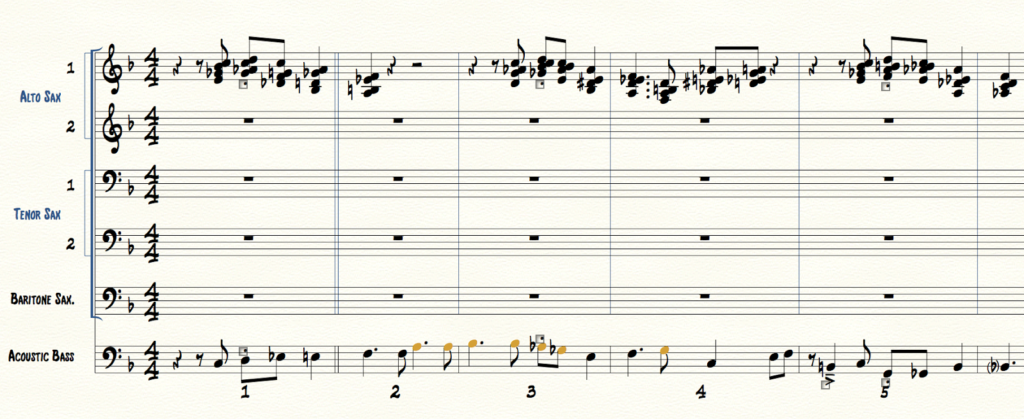It’s “getting real” in this third post chronicling the tale of a burgeoning big band chart. Remember when I said it wouldn’t always be pretty, and that I have a tendency to try breaking out of any premeditated roadmap? It’s all going down. Last night I harmonized the opening melody statement using standard 4-part closed block techniques. I started with the obvious (“fencepost”) chords that landed on downbeats, and then mostly worked backwards using tonicization/secondary dominants. I did it on paper first and then plugged it into Finale so I could hear it back and determine if I was on the right track.
I created the following “staff set” to show just the saxophone section and string bass. With my keyboard I played chords into the lead alto part, from which I will use Finale’s “explode” function to distribute the notes across the sax section. For the bari sax part (the 5th saxophone), I will just double the melody down the octave.
Here’s what it will sound like (sort of). I’m not sure why the bass sounds so percussive, but c’est la vie.
Ironically, writing a bass part that felt right took just about as long as harmonizing the melody for the sax section. These twelve measures represent about 3 hours of work.
As for deviating from my formal plan, I’ll be doing so on two fronts …so far. The initial unison melody statement will be presented by alto saxes, bari sax (down the octave) and 2 muted trumpets rather than just the sax section with the bari plus two tenors down the octave, which I imagine being too “heavy.”
After two choruses of stating the melody, I think the momentum would be stalled if the rhythm section then dropped out for the sax solo. Instead, I think I will write a full chorus of sax soli with the rhythm section, before extracting them.

